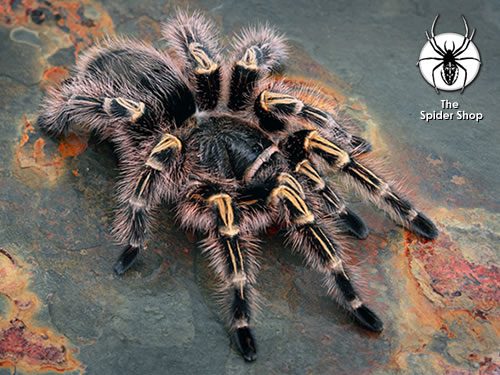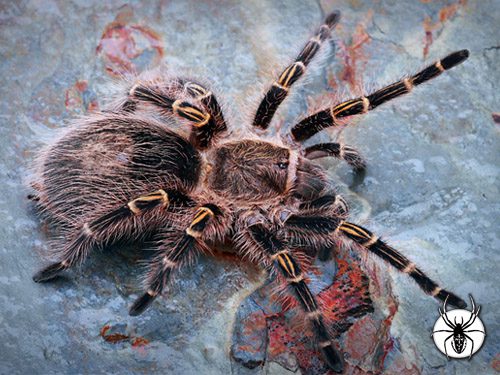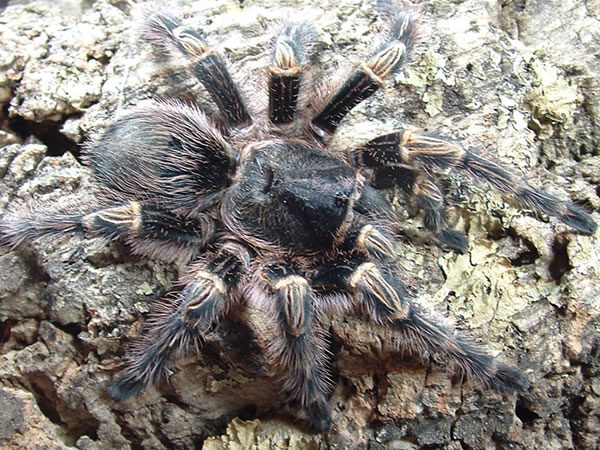Grammostola pulchripes
Chaco Golden Knee (SAF)
Simon, 1891
Species Info:
Origin
Lifestyle
Temp
Humidity
Leg Span
Disposition
Suitability
This absolutely beautiful Tarantula is an ideal starter species! It is calm and docile like Brachypelma spp., it is also a nicely coloured and huge species. It has long pinkish hairs with golden yellow striping on the legs and bulky, robust appearance. The more the spider grows, the more gold that shows!
This species was first recorded from the Chaco region of Argentina and additionally found at the Paraguayan part of Grand Chaco. The Grand Chaco is a large area situated west to the Paraguay River and is a grassland bush grown lowland, which is flooded during the wet season. In the wild this species is not known to dig its own burrows but rather occupy an existing one or use other natural ground shelters.
In captivity this perfect pet Tarantula can be kept on a slightly damp substrate or even on a resistively dry substrate. However like other Grammostola spp. it will often not eat if the humidity is two high. This species is not noted to dig and spends most of its time out in the open. This species is known to readily breed in captivity, the first recorded breeding was in the USA in 2000. Eggsacks are large containing 600 – 800 on average and spiderlings are good eaters and pretty bullet proof. However it is not a fast growing species but is compared to other Grammostola spp. They can reach are adult size at about 3 – 3.5 years where as a G.rosea would be a sub adult at this size at best.
Being recently described (but imported into the USA in 1998) this species is often incorrectly classified with a similar species Eupalaestrus campestratus (Pink Zebra) which comes from the same region. But the “Chaco Golden” can be distinguished by the absence of the swollen tibia on leg IV and possessing of very prominent and distinct golden markings on all legs. This species has to regional forms. One coming from Argentina that is less hairy than the one coming from Paraguay (R.Gabriel 2005). They may also be a third variation from Uruguay.


